Understanding Home Design Styles
Let’s be real: home design can feel a little overwhelming. With so many styles out there (like Mid-Century, Coastal, and whatever “Transitional” means), it’s easy to get lost in Pinterest boards and forget what you actually want your space to feel like. The good news is that you don’t have to be an interior designer to create a home that’s beautiful, functional, and totally you.
At the end of the day, your space should reflect who you are and how you want to live, not just follow the latest trend. Whether you’re refreshing a room or starting from scratch, understanding a few core design styles can help you figure out what speaks to you and what you can skip.
Let’s dive into some of the most popular home styles (with no gatekeeping, I promise).
Mid-Century Modern
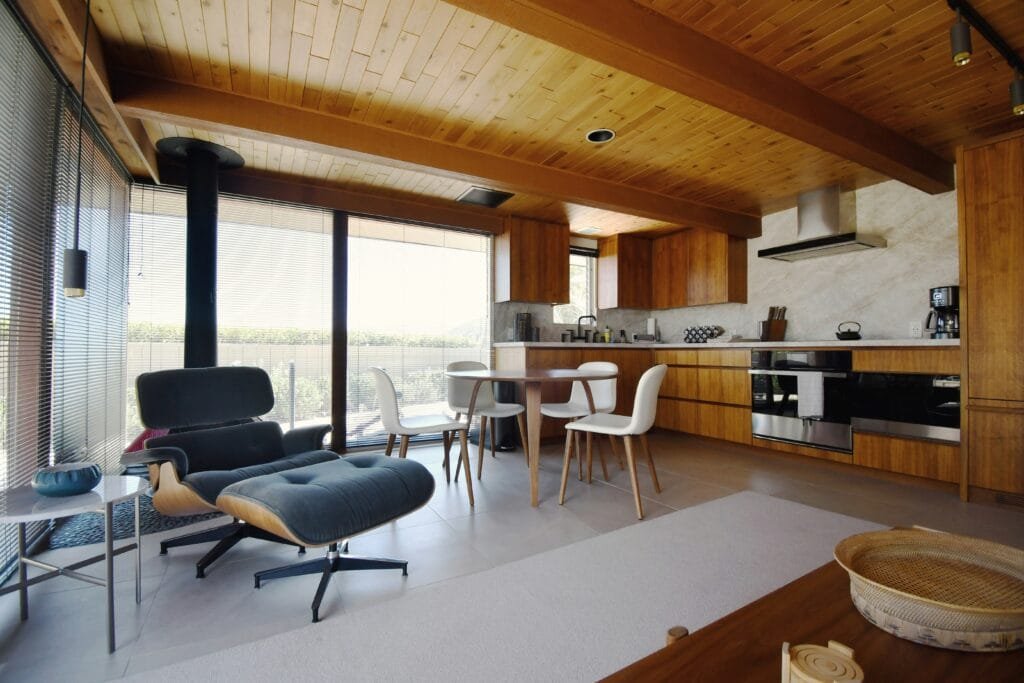
Mid-Century Modern is kind of like that effortlessly cool friend who thrifted their whole outfit and somehow looks like a design magazine cover. It’s clean and simple, bringing in nature in a big way.
What it looks like: Clean lines, tapered legs, and earthy tones like olive, mustard, walnut wood, and splashes of teal or orange.
Why people love it: It feels timeless and grounded—think vintage vibes without feeling outdated. Bonus: the furniture is usually super functional.
Try this: Look for a credenza with clean lines, pair it with some low-profile seating, and bring in a few houseplants for good measure. It’s simple, classic, and always feels fresh.
Art Deco
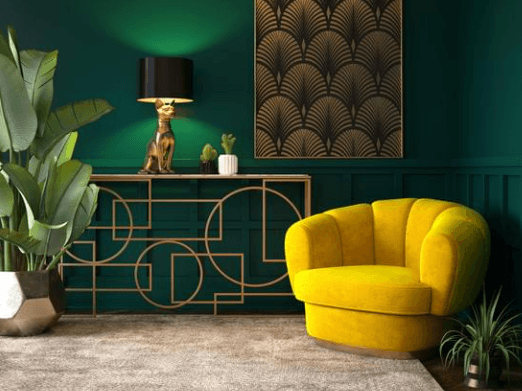
If you’ve ever dreamed of living in a glam 1920s movie set (or just love anything shiny) Art Deco might be calling your name. This style is all about bold details and rich textures.
What it looks like: Geometric patterns, velvet upholstery, metallic accents (gold, brass, chrome), and statement pieces that make the room feel a little extra in the best way.
Why people love it: It brings instant elegance and drama to any space. It’s a style that’s confident, sophisticated, and doesn’t shy away from shine.
Try this: Swap your basic mirror for a gold sunburst one, or add a velvet ottoman in a rich navy or emerald green. Little touches go a long way here.
Light Academia
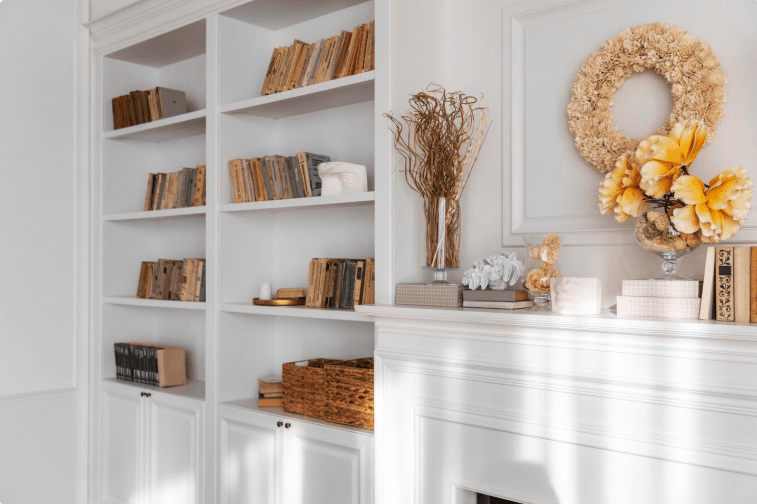
Light Academia is for the romantic at heart—the people who love old books, rainy afternoons, and the idea of a quiet nook to read or journal.
What it looks like: Soft neutrals and muted pastels, vintage books, warm wood tones, delicate textiles like linen and cotton, and maybe a botanical print or two.
Why people love it: It’s like stepping into your own peaceful little library or study. It feels calm, thoughtful, and filled with quiet charm.
Try this: Stack some well-loved books on a coffee table, add a cozy reading chair by the window, and bring in soft lighting with a warm-toned lamp.
This is contrast to Dark Academia, which is fundamentally the same in terms of style and decor; however, the color palette instead leans into darker hues (such as deep blues and greens, dark browns, and even black). Try incorporating those bold darker colors if that’s more your speed.
Modern Farmhouse

Modern Farmhouse is all about combining the warmth of country living with the ease of contemporary design. It’s approachable, functional, and just plain cozy.
What it looks like: Lots of neutrals (think soft whites, grays, and natural wood), shiplap, industrial lighting, and comfy furniture that feels lived-in.
Why people love it: It’s both stylish and family-friendly. You can kick your shoes off and still feel like you’re in a Pinterest-worthy space.
Try this: Layer a chunky knit throw over your couch, bring in reclaimed wood accents, and hang some simple black-and-white prints or farmhouse-style signage.
Bohemian Style

Boho is the style for free spirits and texture lovers. It’s layered, soulful, and endlessly creative. No two Boho spaces look quite the same, and that’s exactly the point.
What it looks like: Bold colors, global patterns, rattan or wicker furniture, plants galore, and a mix of textures (macramé, fringe, vintage rugs—go wild).
Why people love it: It’s expressive and fun! You don’t need to worry about matching—just surround yourself with what you love.
Try this: Start with a vintage rug, layer on floor cushions, and hang a gallery wall of art and personal mementos. Add a trailing pothos or two and you’re golden.
Scandinavian Style
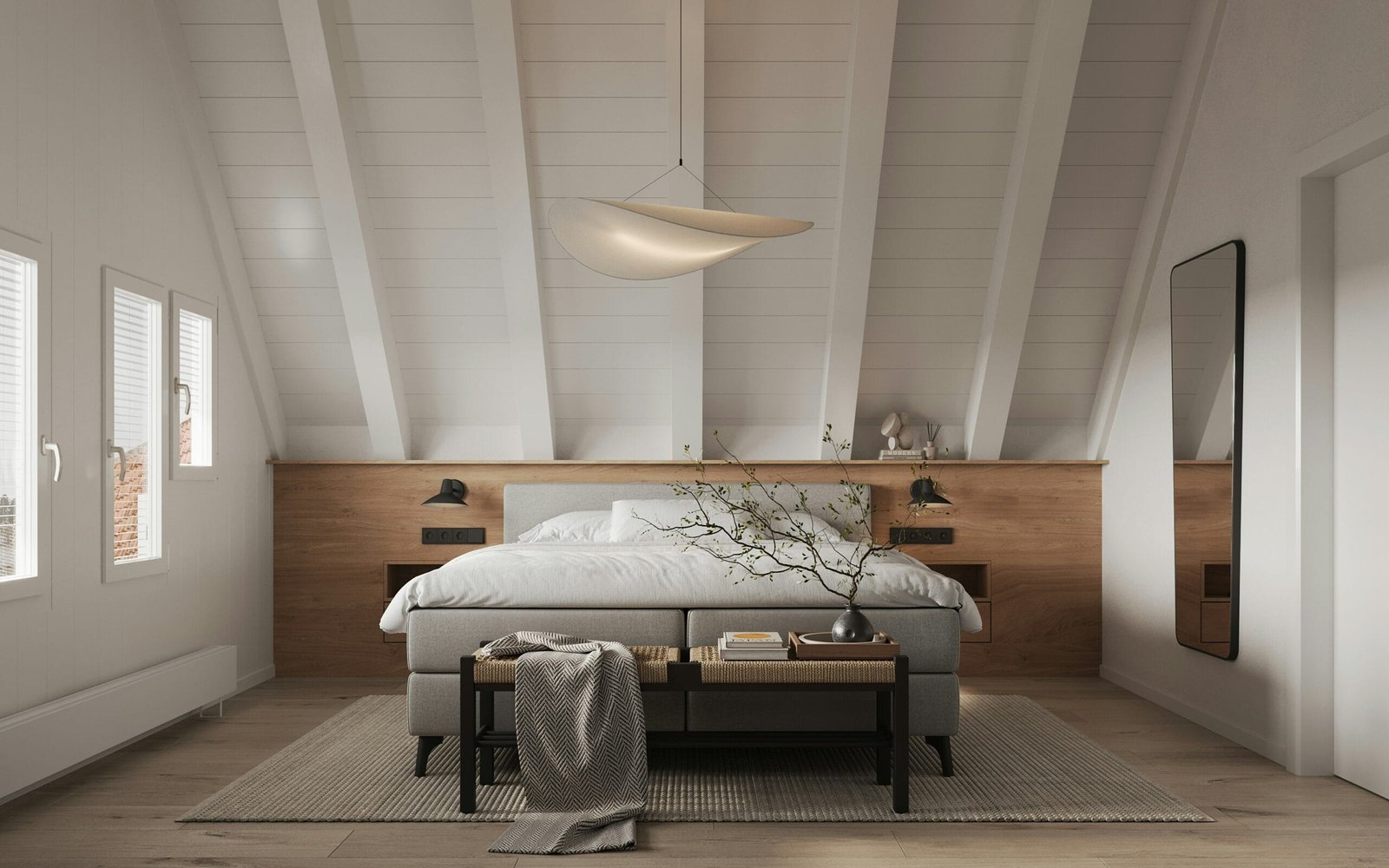
Scandinavian-style design is all about simplicity with warmth. It’s perfect for anyone who wants a clean, minimalist space that still feels cozy and lived-in.
What it looks like: White walls, pale wood, cozy textiles, and a focus on natural light. The motto here is “less but better.”
Why people love it: It feels calming and intentional, like a breath of fresh air. Every piece serves a purpose, and there’s beauty in the quiet.
Try this: Declutter your space, add a white knit throw to a chair, and use soft lighting to create that cozy, hygge vibe.
Eclectic Style
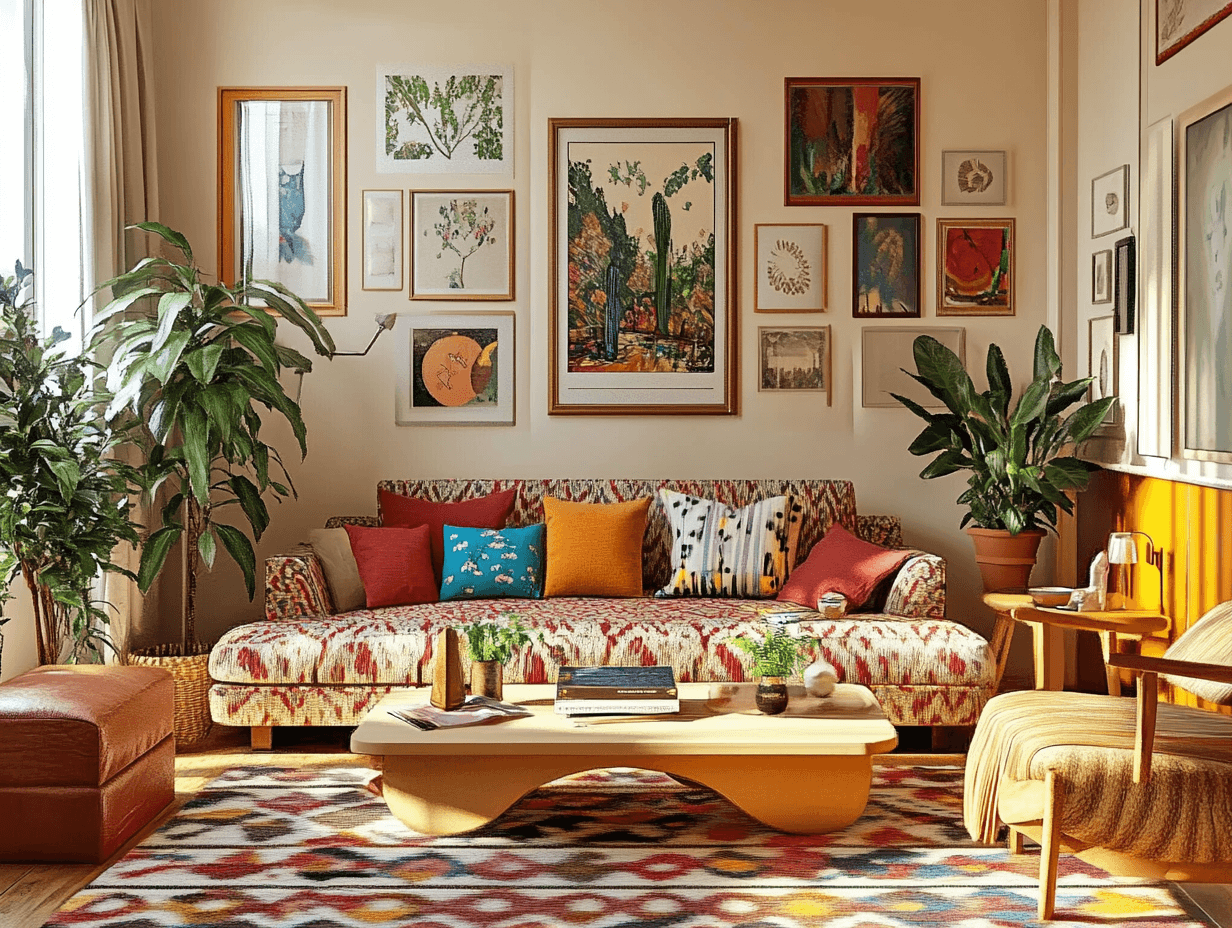
If you can’t choose just one style, good news: you don’t have to! Eclectic design is all about blending elements from different aesthetics to create a space that’s uniquely yours.
What it looks like: A mix of styles, colors, and time periods that somehow all work together. You might see an antique chair next to a modern coffee table and a bold piece of art tying it all in.
Why people love it: It’s personal and full of character. You’re not confined to a specific style. Instead, you’re making the rules and figuring out what makes you feel the best.
Try this: Start with a consistent color palette, then layer in furniture and decor from different eras. Think of it like curating your own cozy museum.
Contemporary Style

Contemporary design is clean, current, and ever-changing. It borrows from modernism but stays up-to-date with the latest trends.
What it looks like: Open spaces, clean lines, neutral colors with bold accents, and minimal clutter.
Why people love it: It feels elegant but livable, just a crisp and confident space.
Try this: Add a sculptural floor lamp, choose furniture with sleek lines, and keep accessories minimal but intentional.
Coastal Style
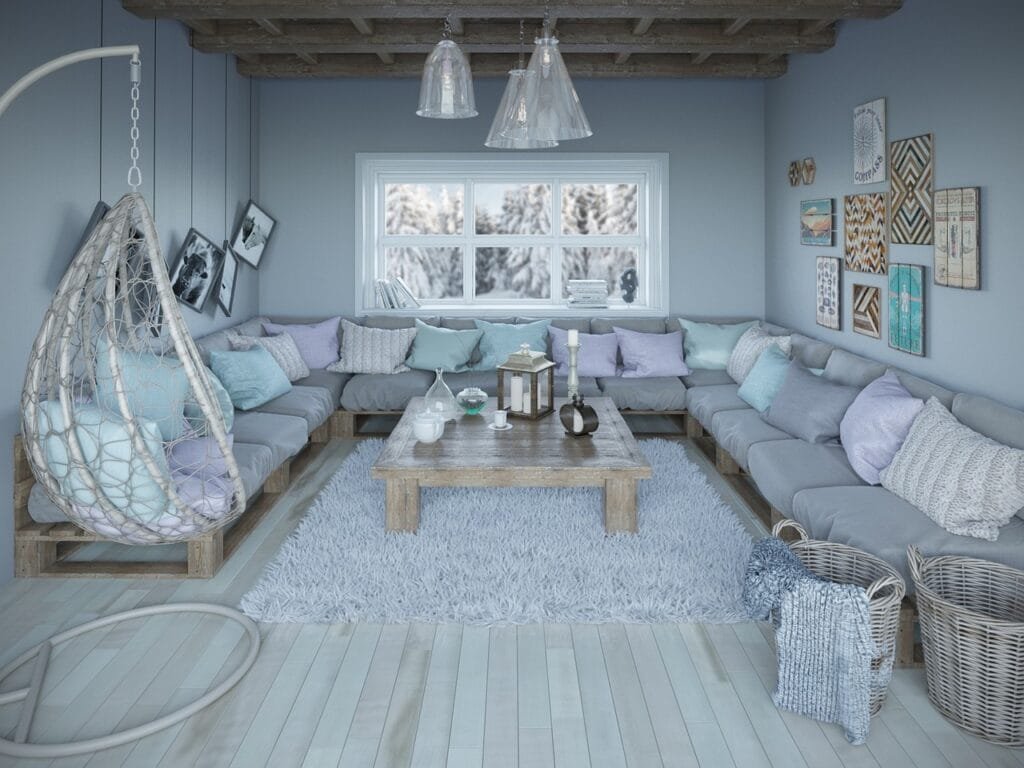
Even if you don’t live near the ocean, you can still bring those calming coastal vibes into your home.
What it looks like: Soft blues, sandy beiges, crisp whites, natural textures (like jute, linen, and rattan), and subtle nautical nods.
Why people love it: It feels like a breath of ocean air—relaxing, refreshing, and effortlessly light.
Try this: Swap in sheer curtains, layer in light-toned wood, and add ocean-inspired accents like driftwood or sea glass.
Transitional Style

Transitional style is a balancing act between traditional and contemporary. It’s timeless, versatile, and easy to adapt as your tastes evolve.
What it looks like: Classic silhouettes with updated finishes, neutral color palettes, soft curves mixed with clean lines.
Why people love it: It offers flexibility and comfort while still feeling refined. It’s a “safe but never boring” kind of style.
Try this: Combine a tufted sofa with a modern coffee table, add a few metallic touches, and layer soft textiles in tonal shades.
Final Thoughts:
At the end of the day, home design is about creating a space that feels like you. Whether you lean into a specific style or mix and match your favorites, what matters most is that your home reflects who you are and supports how you live.
So go ahead, rearrange that furniture, add your statement pieces, and find joy in making your space your own. You deserve a home that feels like your favorite place to be.
Disclaimer: All decorating ideas and home advice shared on this blog are based on personal taste, style, and experience. Results may vary depending on materials, tools, and individual preferences. Always use caution when using tools or altering your living space, and consult professionals when needed.

